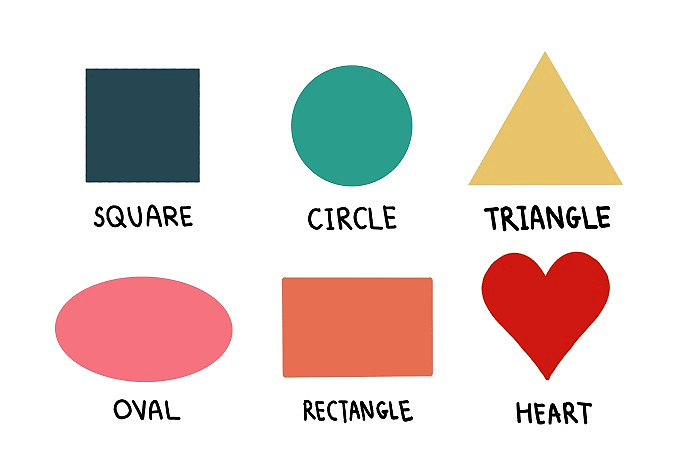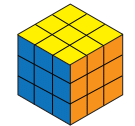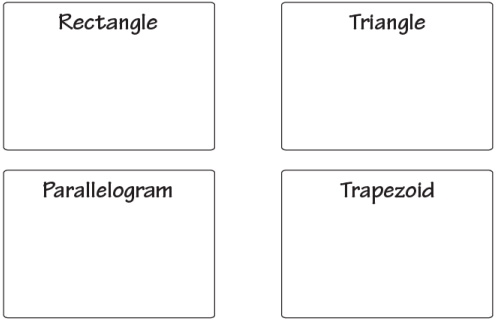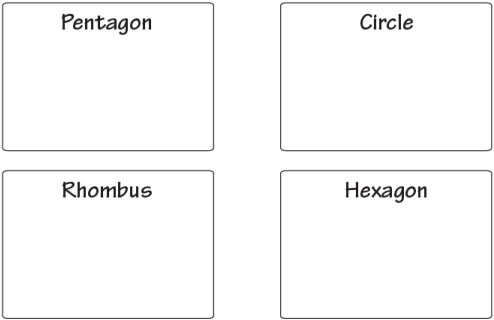Class 1 Exam > Class 1 Notes > Mathematics for Class 1 > Worksheet: Shapes - 2
Shapes - 2 Class 1 Worksheet Maths Chapter 1
 Q1: Fill in the blanks
Q1: Fill in the blanks
(i) A triangle has ______sides and _____ angles.
(ii) Name two quadrilaterals whose sides are equal in length ____________
(iii) How many diagonals does a parallelogram have? ________
(iv) How many sides does a regular hexagon have? _________What is the measure of each angle? ________
(v) _________is the longest chord of the circle.
(vi) Only one diagonal is bisected by the other. Name the shape. _______
Q2: What 2D shapes do the 3D objects represent?
(i) ______________
______________
(ii) ______________
______________
(iii) ______________
______________
(iv) ______________
______________
(v) ______________
______________
Q3: Draw the given 2D shapes and color them


The document Shapes - 2 Class 1 Worksheet Maths Chapter 1 is a part of the Class 1 Course Mathematics for Class 1.
All you need of Class 1 at this link: Class 1
|
15 videos|135 docs|23 tests
|
FAQs on Shapes - 2 Class 1 Worksheet Maths Chapter 1
| 1. What are some common shapes that we encounter in our daily lives? |  |
Ans. Some common shapes that we encounter in our daily lives include circles, squares, rectangles, triangles, and spheres. These shapes can be found in various objects such as coins, tables, buildings, and even fruits.
| 2. How are shapes classified based on their properties? |  |
Ans. Shapes can be classified based on their properties such as the number of sides, angles, and dimensions. For example, a triangle has three sides and three angles, while a square has four sides of equal length and four right angles.
| 3. What is the difference between 2D and 3D shapes? |  |
Ans. 2D shapes, also known as flat shapes, are figures that have only two dimensions - length and width. Examples of 2D shapes include circles, squares, and triangles. On the other hand, 3D shapes, also called solid shapes, have three dimensions - length, width, and height. Examples of 3D shapes include cubes, spheres, and pyramids.
| 4. How can we calculate the area of different shapes? |  |
Ans. The area of different shapes can be calculated using specific formulas. For example, the area of a square is calculated by multiplying the length of one side by itself. The area of a rectangle is found by multiplying its length and width. The area of a circle is calculated using the formula πr^2, where r represents the radius of the circle.
| 5. Why are shapes important in mathematics? |  |
Ans. Shapes are important in mathematics as they help us understand and visualize various concepts. They are the foundation of geometry, which is a branch of mathematics that deals with the properties and relationships of shapes. Shapes also play a crucial role in problem-solving, spatial reasoning, and measurements.
Related Searches
















